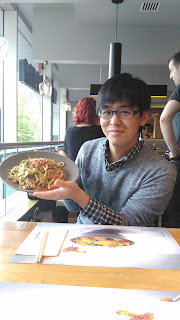Sally Shortall is the Duke of Northumberland Professor of Rural Economy, in Newcastle University’s Centre for Rural Economy. In our blog she shares some thoughts about gender bias in a 'post truth' world.
I have long considered my enjoyment of the weekend Financial Times as something of a guilty pleasure. My friends tend to associate the paper with right wing capitalist sentiments. I have always found the quality of the economic analysis and international news coverage excellent. In particular I enjoy the Life and Arts section to which many academics contribute on political, historical and sociological matters. I am heartened by, and often quote Noam Chomsky, who has also lauded the Financial Times for the quality of its international news coverage.
At the moment I am immersed in a project for the Scottish Government, looking at the role of women in agriculture. I have been all over Scotland interviewing women and men about women’s role in agriculture, in farming organisations, and considering cultural practices that impact on gender roles on the farm. I have studied this question now for more than two decades, and I am struck by the huge strides in gender equality, combined with continuing unconscious gender bias, and outright sexism. I am analysing the data right now, so constantly thinking about these questions. The other question I have researched in recent years is how knowledge gains legitimacy. Who decides what the truth is? We now have phrases like ‘post-truth’. Different versions of the truth vie to be seen as the correct one. This question, as we all know, is particularly pertinent in the current climate.
So it was with delight that I picked up the Financial Times recently, and saw that Tim Harford had an excellent article asking what we can do to champion the truth. He presents the problem nicely. It is in the interest of some groups to manipulate facts, and he gives the example of the tobacco industry going back to the 1950s. Tim Harford presents some of the ‘problems’ with facts: they are boring, people can feel threatened by the truth, and an untruth can beat off a complicated set of facts by being easier to understand and remember. He reports that several studies have shown that repeating a false claim, even in the context of debunking that claim, can make it stick. Our memories fade, and we remember only the myth, because the myth was constantly repeated. Tim Harford argues that one way to try and combat this problem is to nurture scientific curiosity. A group of prestigious social scientists has carried out research that shows those who are curious about the truth, and are motivated to seek it out and look beyond the repetition of a false claim, are those most likely to be persuaded by facts.
This was the first article I read on that Saturday, and I then turned to the main section of the paper. I was struck by the headline on the front page that stated ‘Tesco boss fears white men on boards are “endangered”’. There was a further report on page eleven, with a title that repeats ‘Tesco chairman claims white men “endangered”’. The caption on that article reads: ‘women from ethnic minority backgrounds are in a “propitious period” Tesco’s John Allan said’. Three headlines then: men are threatened and women from ethnic minorities have the advantage. The text, for those who did read it, notes that John Allan is one of eight white men on a board of eleven. Tesco appointed half of the board slots it filled in 2016 with women, which meant that they went from having one woman on the board in 2015 to three in 2016, slightly more than 25%. The article reports that management experts do not agree with Mr Allan’s rosy assessment of UK board diversity. The article says that women account for only 29 per cent of directors appointed in the UK last year, the lowest proportion since 2012. Why then do these articles lead with false claims from Mr Allan? Tim Harford shows that the myth is remembered because it is constantly repeated. This is what has happened here – the false claim is repeated three times, and only to those who read the whole article will the counter-argument be clear. Tim Harford could have used this article as an example for his piece in the magazine.
There are two issues that concern me here. One is the constant repetition of a myth around John Allan’s statement. This is particularly troubling when a different section of the paper has an excellent article about the dangers of this type of presentation of reality. The second is the subliminal message which is, at best, an example of unconscious gender bias; there are no barriers for women, it is ‘in fact’ white men who are under threat.



